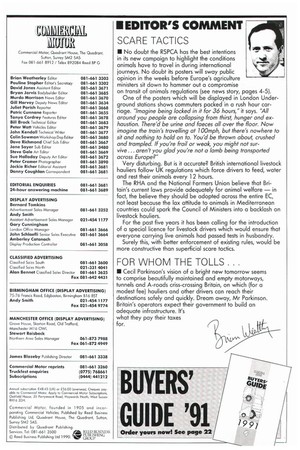SCARE TACTICS
Page 5

If you've noticed an error in this article please click here to report it so we can fix it.
• No doubt the RSPCA has the best intentions in its new campaign to highlight the conditions animals have to travel in during international journeys. No doubt its posters will sway public opinion in the weeks before Europe's agriculture ministers sit down to hammer out a compromise on transit of animals regulations (see news story, pages 4-5). One of the posters which will be displayed in London Underground stations shows commuters packed in a rush hour carriage. "Imagine being locked in it for 36 hours," it says. "All around you people are collapsing from thirst, hunger and exhaustion. There'd be urine and faeces all over the floor. Now imagine the train's travelling at 700mph, but there's nowhere to sit and nothing to hold on to. You'd be thrown about, crushed and trampled, If you're frail or weak, you might not survive... aren't you glad you're not a lamb being transported across Europe?" Very disturbing. But is it accurate? British international livestock hauliers follow UK regulations which force drivers to feed, water and rest their animals every 1 2 hours.
The RHA and the National Farmers Union believe that Britain's current laws provide adequately for animal welfare — in fact, the believe they should be adopted across the entire EC, not least because the lax attitude to animals in Mediterranean countries could spark the Council of Ministers into a backlash on livestock hauliers.
For the past five years it has been calling for the introduction of a special licence for livestock drivers which would ensure that everyone carrying live animals had passed tests in husbandry. Surely this, with better enforcement of existing rules, would be more constructive than superficial scare tactics.












































































































